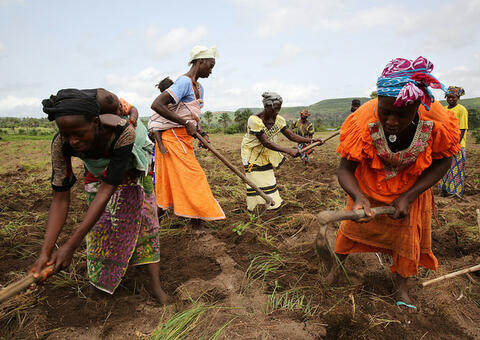Blog
Disruptive Innovation: Sharing Lessons from the Africa Enterprise Challenge Fund

Following our February 11 webinar, the SME Finance Forum interviewed Hugh Scott, Director of the Africa Enterprise Challenge Fund, a US$250m multi-donor fund providing grants and soft loans to innovative businesses in agriculture, financial services, renewable energy and technologies for adapting to climate change.
Tell us about AECF and the kind of support you provide to businesses?
The AECF is a Challenge Fund whose purpose is to make agribusiness, rural finance and renewable energy market systems work better for the poor in Sub-Saharan Africa (SSA). Through its “competition” approach, the AECF seeks out and receives large numbers of applications from businesses for new and innovative business ideas that will have a development impact (in terms of incomes and jobs) on large numbers of rural, mainly poor, households across Africa.
Key objectives of the AECF are to use its competition approach to surface a large and varied pipeline of investment opportunities (other funders are finding it difficult to find a good pipeline of such opportunities); to support innovative business ideas that will have an impact on other businesses in the market and the market system itself; to put the minimum amount of money into a business idea to make it happen when otherwise it would not; to leverage-in commercial finance (rather than distort financial markets); and, to act as a feeder fund for more formal finance providers (impact investors, banks etc).
The winners of AECF competitions receive matching grants and zero interest loans between US$250,000 and US$1.5m per “winning” business. In certain cases some technical assistance is also available.
Since its launch in June 2008, the AECF has received about US$250m in funding from bilateral donors, has run 19 competitions, received over 5,000 applications and has funded just over 200 businesses (with 6 year contracts) across 23 countries in SSA.
What portion of the businesses you support succeed? What has been your development impact so far?
To answer this, we have to agree on what “success” means. Is it business success (a profitable business or a profitable business idea”)? Is it sustainable development impact (number of beneficiary households and their income increases)? Or is it both or a mixture of both?
It is early days to be confident about business success. Agribusiness initiatives take many seasons and years to reach full productivity. We expect about 30% of the business ideas to fail – currently the figure is about 15% but it will grow over time.
As far as development impact is concerned the AECF is performing well and its impact should increase substantially over time. In 2013 (the last year for which we have consolidated data – 2014 figures will be published later this year), we estimate that 750,000 rural households (over 3.5m people) benefited from the AECF.
What are the three biggest challenges of funding disruptive innovation?
Disruptive innovation is where a business idea introduced by one company is copied by many others and results in a broad systemic impact on the market system. A business idea can be very innovative but it may be such a “niche” product or idea that even if it does work it will have little impact on other businesses, consumers or suppliers. The “mpesa” mobile money product in Kenya is a good example of disruptive innovation.
The first challenge is to ensure AECF competitions are very well publicized and marketed. You cannot fund innovative businesses and projects if they do not apply to your fund – hence the large numbers of applicants we receive. It is all about finding serendipity.
The key is being able to recognize, ex ante, which businesses have the potential to make an impact on the value chain or market system in which they are or will be working. This cannot be done by asking businesses to complete a box in an application form. One to one discussions with businesses at the final stage of the competition is required.
Patience is critical. Innovative ideas take time to reach market readiness. Often regulatory approvals are required which can take much longer than planned and delay product launch. Once launched, like for all growing businesses, cash flow and cash flow management are often the big issue.
What has been your experience in fragile and conflict states? What do you do differently under those circumstances?
The AECF has provided funding to about 60 businesses/projects in what the World Bank/ICF classify as fragile and conflict states. The AECF’s largest FCS portfolio is in Zimbabwe followed by Somalia/Somaliland, Sierra Leone, South Sudan, DRC and Liberia. The performance varies greatly from one FCS to another and it is difficult to generalize beyond stating that it is more costly to do business in such countries, the legal and regulatory environment can be problematic, infrastructure is generally poor, access to markets difficult and security may be a major issue etc. Some additional points to note are that the diaspora matters – where the diaspora of a country has been successful then they are likely to be the first to invest “back home” and are frequently the most successful investors – we seek them out as investment partners.
We have special competitions that target what we call Post Conflict states. In these cases it is normal to provide grants only (rather than grants and zero interest rate loans), common to have a training and technical assistance fund to support what are often smaller businesses and special security arrangements for AECF personnel.





